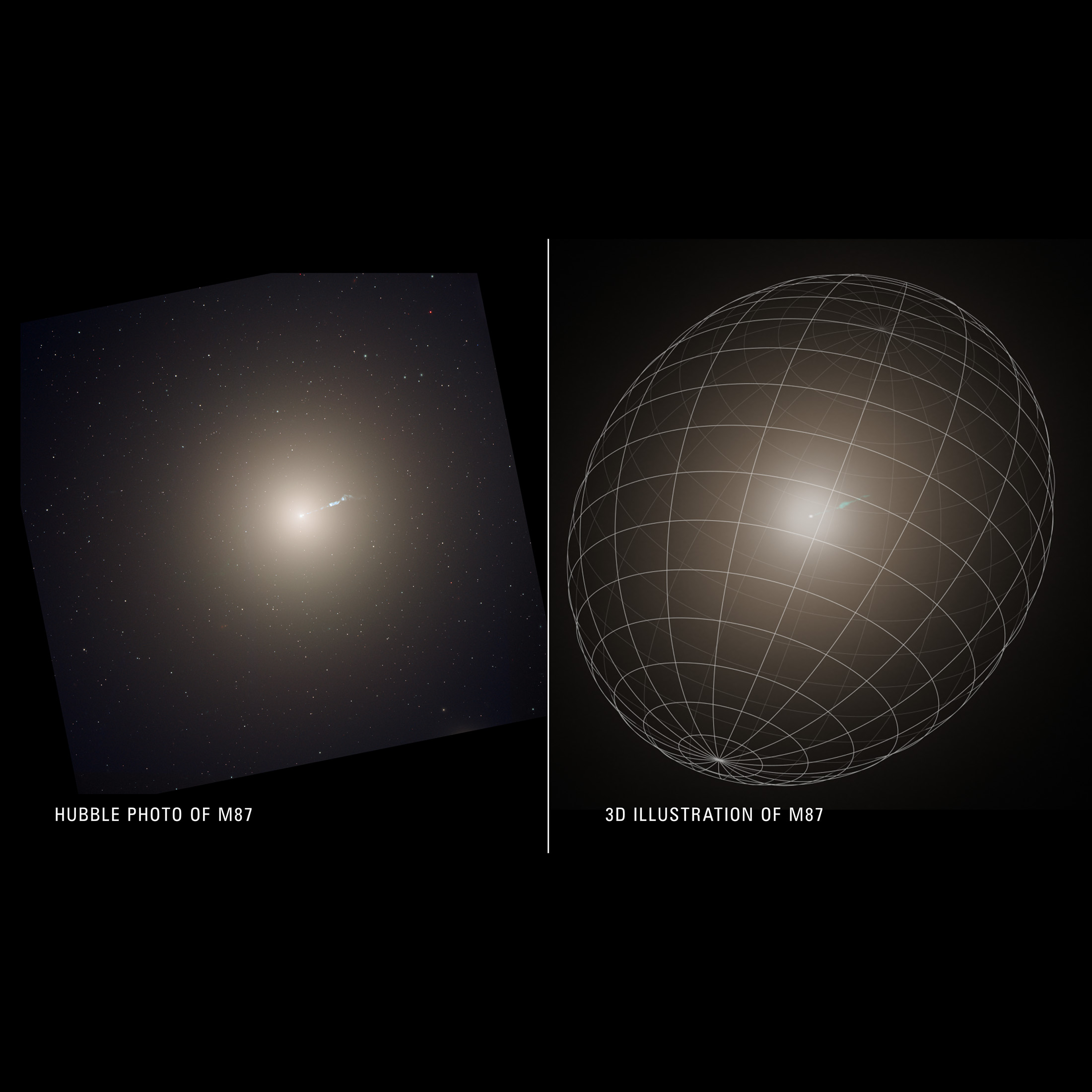
Summary
A Huge City of Myriad Stars Turns Out to be Potato-Shaped
Though it’s estimated that the universe contains 1 trillion galaxies, they come in just a few basic shapes. American astronomer Edwin Hubble realized this in the early 20th century when he used the most powerful telescope on Earth at the time to peer across the universe. Like a kid collecting rocks, he sorted them into shapes. Many were flattened spiral disks of stars. Others looked like cotton balls, which he called elliptical galaxies. Though the universe is three-dimensional, galaxies look flat on the sky. They are too far away for astronomers to employ stereoscopic vision. Now, a century later, astronomers at last have the tools to estimate the true shape of an elliptical galaxy. They picked one of the nearest elliptical galaxies to Earth, M87, located 55 million light-years away in the heart of the vast Virgo cluster of galaxies. By following the motion of stars around the center of M87, like bees around a hive, they’ve measured that the galaxy looks potato-shaped. It not only has a long and short axis, which defines an ellipse on a piece of graph paper, but they measured a third axis which helps define the three-dimensionality. The geometric term is: triaxial.

